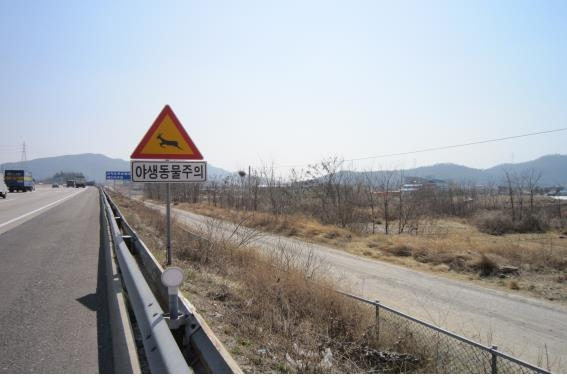
Close to 65,000 wild animals fell victim to road accidents last year, equating to over 60,000 drivers entering into collisions with these creatures. (Image courtesy of Korea Expressway Corporation)
SEOUL, Oct. 30 (Korea Bizwire) – Close to 65,000 wild animals fell victim to road accidents last year, equating to over 60,000 drivers entering into collisions with these creatures. Despite growing efforts to mitigate roadkill incidents, which include measures such as installing fences and signboards, the number of animals meeting their end in road accidents continues to climb.
According to data from the National Institute of Ecology, there were a total of 154,556 cases of roadkill accidents from 2018 to 2022. The trend of increasing roadkill incidents has persisted year after year. In the past year alone, 63,989 wild animals met their demise in road accidents, marking a four-fold increase from the 16,812 cases recorded in 2018. The numbers for roadkill incidents were 21,387 in 2019, 15,107 in 2020, and a staggering 37,261 in 2021.
Cats were the most frequently impacted by roadkill accidents, with 57,076 of them losing their lives between 2019 and 2022, followed by elk (45,424), raccoons (8,790), dogs (5,532), roe deer (300), badgers (898), and boars (709).
However, experts note that these figures represent only reported cases, and the actual number of wild animals killed in road accidents is likely higher. This discrepancy arises because many small animals, such as squirrels, are often excluded from the statistics. It is estimated that the true annual number of roadkill incidents surpasses 100,000.
The root cause of the persistently high number of roadkill incidents is the excessive density of roads in the country. According to Statistics Korea, as of 2020, there were 112,977 kilometers of roads in South Korea, with more than 1,000 kilometers of new roads added over the past five years.
In a report titled ‘Road Kill and Road Kill Investigation Method,’ published by the National Institute of Ecology in December 2022, it was stated that the country has more than 1 kilometer of roads per square kilometer of land. Considering that the average territory inhabited by a raccoon is between 0.8 and 1.2 square kilometers, there are more than 1 kilometer of roads running through the average raccoon’s habitat.
M. H. Lee (mhlee@koreabizwire.com)






